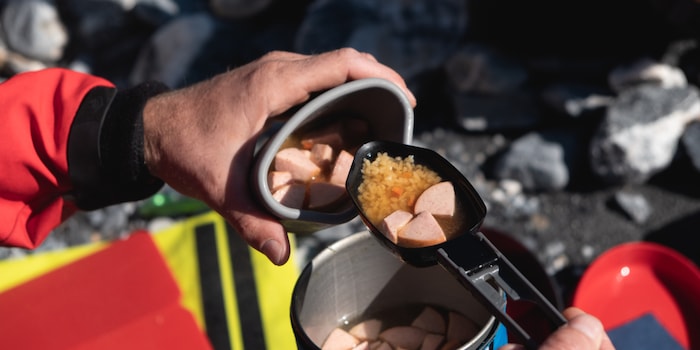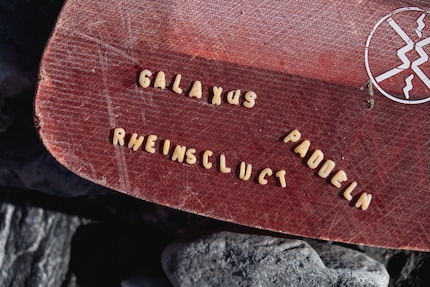
Background information
In the richly varied
by Michael Restin

It has been around for over 150 years. It exists as a soup, a proverb and an educational game. Letter pasta is perfect for children and anyone who wants to become one. But with cervelat, please.
There are childhood pleasures that are unjustly forgotten in the course of life. Taking a running jump into a puddle. Recognising animals in cloud formations. Eating alphabet soup and putting words together on the edge of a plate. I haven't had an alphabet on my spoon for a while. And I assumed that pasta in alphabetical form was a recent achievement of the affluent society. 50s, 60s, something like that. I was surprised to learn that the stuff has been around since at least 1867. The innovation was advertised in the USA shortly after the Civil War
.
It's no wonder that the educated citizen broth originated there, as the literacy rate in the New England states of the East Coast was already at a record-breaking 95 per cent at the time. At the beginning of the 20th century, the trend spilled over the big soup bowl of the Atlantic to us. A trend that came to write. And a success story that has been savoured by generations. Nevertheless, in my experience, the letters disappear from the menu at some point after puberty. Then serious pasta is sunk into the soup or creamier things are spooned up. But there are reasons to stay loyal to "Alphabet Soup". I owe my rediscovery of the floating letters to an Appenzeller, a Mexican and a paddle trip through the Rhine Gorge.
Since storage space in the kayak is limited, soup has made it on board and onto our menu. Letters that have become pasta are so compact, you can hardly get more pasta per cubic centimetre. And that's what matters in this case. Spirelli, farfalle or rigatoni, on the other hand, can pack their bags. The purest waste of space. Photographer Tom and I are fed highly efficiently on our trip with Ruedi Gamper and Yair Camacho: a power pack of alphabet soup and a few cervelat, and the gourmet menu for four is ready.
The recipe:

Sitting in the autumn sunshine, showered by the Rhine and shivering slightly, your stomach rejoices at the first spoonful of soup broth. This feeling of elation, which reliably sets in in beautiful places in perfect weather and after a bit of exercise, turns even a simple meal into a highlight. Warming broth and bite-sized letters, flanked by fat chunks of cervelat - a pleasure from A to Z. It doesn't get any better than this at times like these. The ingredients fit into even the smallest rucksack and we appreciate the warming meal.

How the idea of pressing pasta into the shape of a letter came about is not known for certain. But it has had a place in the American vocabulary at least since President Franklin D. Roosevelt. Roosevelt at the latest. In the 1930s, he had so many agencies set up with abbreviations such as AAA, FDIC or NLRB that soon people were only talking about "alphabet agencies" or "alphabet soup". Spiced up with legends about chefs in love who draped messages in the broth for their beloved, the little letters made it big. If you like it less sticky, you can add messages to your soup online without getting your fingers dirty. Or play a board game.
But it's still funnier to pan in the soup. What might not go down so well in the canteen feels absolutely right by the rushing Rhine. As soon as the first hunger pangs are satisfied, we use our index fingers to fish for suitable letters in the leftover broth. With indescribable fun and a modest yield.

Simple writer and dad of two who likes to be on the move, wading through everyday family life. Juggling several balls, I'll occasionally drop one. It could be a ball, or a remark. Or both.
Interesting facts about products, behind-the-scenes looks at manufacturers and deep-dives on interesting people.
Show all